What kind of flowmeters are used in Textile Industry?

In the Textile industry, there are mainly three areas that can use flowmeters. The first one is a steam generator, and it needs to measure and control steam consumption. The second area is the dying process, and it needs to use water and products sewage. The third area is an air compressor, and it needs to use a flowmeter to measure the compressed air. Let us introduce these in detail.
1. Steam Flow measurement

1.1 What is steam application in the textile industry?
Due to its properties, steam is the most critical heat carrier in many processes in the textile industry today and in the future. When comparing steam with water, steam delivers six times more energy than water at the same mass and a constant temperature. In the textile workshop of a textile factory, the fabric will often be processed with techniques such as ironing, dyeing, and ironing, the most used is steam, and the Wuhan Re-energy Technology steam generator can improve the steam utilization rate and add to the process.
General ironing, including pre-treatment, dyeing, printing, and finishing process required by the heat source, is basically by steam supply. Therefore, special steam generators for textile production and processing become the best choice for textile workshops to effectively improve steam utilization.
For textile mills, ironing and fiber processing require a steam heat source to save steam heat loss effectively. Many textile companies purchase special steam generators for ironing and dyeing. Ironing and dyeing with a steam generator is also a chemical process. After the chemical treatment of the fiber material, it needs to be washed and dried repeatedly, which consumes a large amount of steam heat and produces harmful substances that pollute the air and water. If you want to improve steam utilization and reduce pollution when dyeing and finishing processes, you need to buy a heat source in the form of steam.
1.2 Why vortex steam flowmeters are widely used for steam flow measurement in the textile industry?
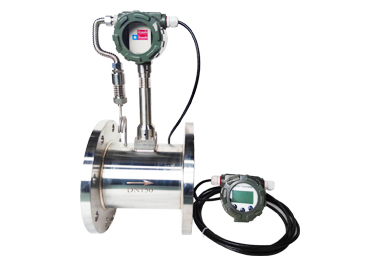
Steam vortex flowmeter is mainly used in the textile industry’s steam medium fluid flow measurement pipeline. And steam vortex flowmeter is characterized by slight pressure loss, an extensive range, high accuracy. Moreover, the volume flow is almost independent of fluid density, pressure, temperature, viscosity, and other parameters in measuring working conditions.
-
High reliability
Steam vortex flowmeter using integrated consumption of sensing components and control circuit, feeling local no mechanical movement, driving a local selection of high-quality relays, significantly improving the reliability.
-
Extensive flow range
Steam vortex flowmeter is only sensitive to the flow rate of the fluid, so you can be connected to different pipe diameters to monitor the flow of various sizes; tracking the size of the flow is virtually unlimited.
-
Full straight through active piping
Steam vortex flowmeter full straight through the characteristics of many places of use has essential significance, in the petroleum, chemical, heavy industry, light industry, biological engineering medicine and many other industries of consumption, the activity of the activity by the flow switch barriers, so can incur fluid obstruction pipeline and other consumption accidents. The flow switch can monitor the flow rate online without affecting the flow rate and preventing accidents.
-
Concise and intuitive instructions
Steam vortex flowmeter with power supply indication and flow pattern indication. It can be intuitively displayed later in the pipeline flow pattern.
- Applicable to a variety of fluid media
Steam vortex flowmeter, the same type of flow switch applied to gas, can also be used for liquid, such as water, oil, etc. Adjust the knob in the flow switch, and you can stop monitoring the flow of gases, drinks, etc.
-
No pressure loss
It can be integrated through a particular method of manufacturing steam vortex flowmeter. The probe can be tiny in size, so the fluid simply has no pressure loss. In many places, indirectly replacing the pressure switch will give the system better reliability and a more comprehensive range of applications.
2. Sewage flow measurement
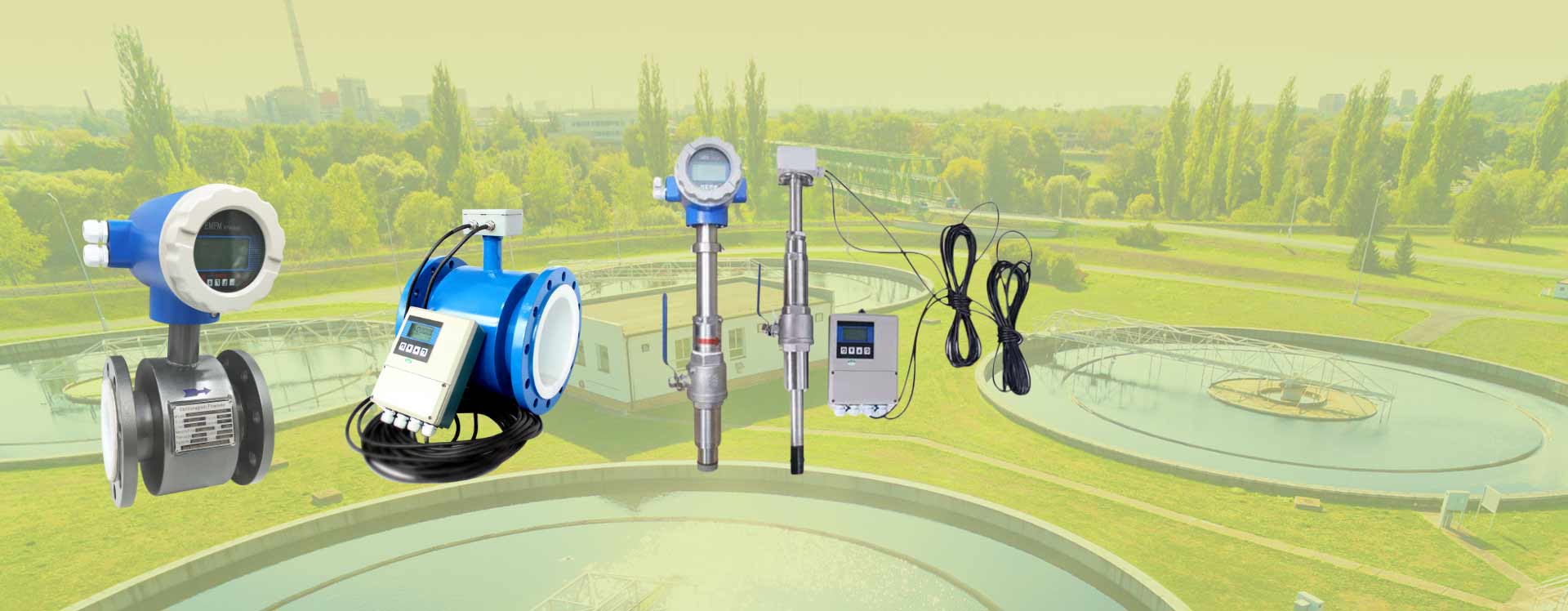
2.1 What is the feature of wastewater produced by Textile printing and dyeing?
Large industrial wastewater is produced by the Textile printing and dyeing industry. The wastewater mainly contains dirt on textile fibers, grease, salts, and various kinds of slurry, dyes, surfactants, auxiliaries, acids, and bases attached to the processing process.
The wastewater is characterized by the high concentration of organic matter, complex composition, deep and variable chromaticity, significant changes in pH, large changes in water quality, and is complex industrial wastewater to treat. Furthermore, with the development of chemical fiber fabrics, the rise of imitation silk, and the improvement of finishing printing and dyeing, many organic substances enter the textile printing and dyeing wastewater, such as PVA slurry, rayon alkali decomposition, etc. These give a severe challenge to the traditional wastewater treatment process. As a result, the COD concentration also rises from a few hundred milligrams per liter to 3000-5000mg/l.
Pulp dyeing wastewater has high chromaticity and high COD, especially according to the printing and dyeing processes developed in foreign markets such as mercerized blue, mercerized black, extra dark blue, extra dark black, etc. A large number of sulfide dyes and printing and dyeing auxiliaries such as sodium sulfide are used in this type of printing and dyeing, so the wastewater contains a large amount of sulfide, and this type of wastewater must be pretreated with drugs and then treated in series to achieve stable discharge standards. Bleaching and dyeing wastewater contains dyestuff, slurry, surfactants, and other additives. The volume of this type of wastewater is large, the concentration and chromaticity are low, if purely physical treatment is used, the effluent is also between 100 and 200mg/l, the chromaticity can also be to meet the discharge requirements, but the amount of pollution is greatly increased, the cost of sludge treatment is higher, and it is easy to cause secondary pollution, in the case of strict environmental protection requirements should be fully considered biochemical treatment The conventional enhanced biological treatment process can meet the treatment requirements.
2.2 Why are electromagnetic flowmeters widely used in the textile industry?
Intelligent electromagnetic flowmeters have been used in wastewater treatment for more than 50 years and have been widely used worldwide, primarily to measure wastewater in the textile industry.
With the acceleration of UK’s industrialization process, environmental pollution problems are becoming more and more serious, society’s call for sustainable development is also growing, people accept the concept of harmony between man and nature, and the treatment of various kinds of pollution is more urgent. Now many water treatment companies are mainly printing and dyeing industrial wastewater integrated urban wastewater treatment enterprises. Because the flow measurement is essential in the sewage treatment process, the need to measure and control sewage discharge, additives, sludge, operational theory of the intelligent electromagnetic flowmeter is founded on Faraday’s law of electromagnetic induction. When the conductive metal rod is at a certain speed to move perpendicular to the magnetic line of force, that will produce the induced voltage. For example, suppose the magnetic field strength is B. In that case, the length of the metal rod is L, and the speed is v. In the intelligent electromagnetic flowmeter, the electrically conductive medium in the measured tube is comparable to a conductive metal rod in Faraday’s test. Two electromagnetic coils at the top and bottom generate a constant magnetic field. When there is a conductive medium flowing through, then the induced voltage will be generated. Two electrodes inside the pipe measure the induced voltage generated. The measuring tube is isolated from the fluid and the measuring electrode for electromagnetic isolation by a non-conductive liner (rubber, Teflon, etc.).
The intelligent electromagnetic flowmeter consists of two main parts: the flow sensor and the transmitter. The sensor is equipped with an excitation coil above and below the measurement tube, through the excitation current to generate a magnetic field through the measurement tube, a pair of electrodes mounted on the inner wall of the measurement tube in contact with the liquid, leading to the induced potential, sent to the transmitter. The transmitter then provides the excitation current. According to the converter and sensor assembly classification, there are two types of separation and one body type.
An extensive diameter flowmeter in the sewage treatment process is a primarily split type, part of the installation in the ground, the other part of the earth—small diameter to one body type for more. The market intelligent electromagnetic flowmeter function also varies greatly, simple just measuring one-way flow, and only the output analog signal is driven after the instrument; the multifunctional instrument has measured two-way flow, range switching, upper and lower flow alarm, empty pipe, and power cut off the alarm, small-signal excision, flow display, and total calculation, automatic verification and fault self-diagnosis, communication with the host computer and movement configuration, etc. Some models of the meter’s serial digital communication function can be selected from various communication interfaces and special chips (ASIC) to connect to HART protocol systems, PROFIBUS, Modbus, FF Fieldbus, etc.
Intelligent electromagnetic flowmeter caliber range is more comprehensive than other varieties of flow meters. The premise of using an intelligent electromagnetic flowmeter is that the liquid to be measured must be conductive and cannot be lower than the threshold (i.e., lower limit value). Conductivity below the threshold value will produce measurement errors until it can not be used, more than the threshold value even if the change can also be measured, the value of the error change is not significant, the general-purpose intelligent electromagnetic flowmeter threshold value in 10-4 ~ (5 × 10-6) S / cm between, depending on the model. Use also depends on the sensor and converter between the flow signal line length and its distribution capacitance. The manufacturer’s instructions usually specify the conductivity of the corresponding signal line length. Industrial water and its aqueous solution conductivity greater than 10-4S/cm, acid, alkali, salt liquid conductivity between 10-4 ~ 10-1S/cm, the use of no problem, low distilled water for 10-5S/cm also does not exist.
An intelligent electromagnetic flowmeter can not measure the conductivity of very low liquids, such as petroleum products and organic solvents. It cannot measure gases, steam, and fluids containing more giant bubbles. The information on some pure liquid or aqueous solutions shows low conductivity, and the electromagnetic flowmeter can not be used. However, the actual work will encounter impurities and can use the example, such pollutants to increase the conductivity is beneficial. For the aqueous solution, the conductivity of the information is measured in the laboratory with pure water ratios. The actual use of aqueous solutions may be used with industrial water ratios, and conductivity will be higher than the check but also conducive to flow measurement.
Intelligent electromagnetic flowmeter is not affected by temperature, pressure, viscosity, and other external factors, the measurement tube internal will not be affected by no shrinkage or protrusion of the pressure loss caused by the part, in addition, the initial signal detected by the flow element, is fluid with the average flow rate into a precise linear change in voltage, it has nothing to do with the other properties of the fluid, has great superiority. According to the sewage has a significant flow variation, contains impurities, is small corrosive, has a specific conductivity and other characteristics, measuring the flow of sewage, the intelligent electromagnetic flowmeter is a good choice. It has a compact structure and small volume. The electromagnetic flowmeter is easy to install, operate, and maintain. The measuring system is intelligently designed. The overall sealing is strengthened so that it can work adequately in harsher environments. Therefore, an intelligent electromagnetic flowmeter, huge diameter brilliant, has significant advantages in the water and sewage industry and has been very commonly used.
JC series intelligent electromagnetic flowmeter is powerful and easy to operate. Specific features are as follows.
1) Measuring pipeline without obstructing the flow of parts, no pressure loss, straight pipe section requirements at the bottom.
2)Measurement is not affected by fluid density, viscosity, pressure, temperature, and conductivity changes.
3)Lining available in hard rubber, polyurethane, PTFE, PFA, and other materials for selection.
4)The transmitter is available in DC supply/AC supply, 4-wire/2-wire, explosion-proof/non-explosion-proof, economic/standard subdivision to meet your different needs.
5)Light-sensitive keys for open cover free operation; London menu display, more convenient for domestic users.
6)Quick setting menu, a guide to complete parameter setting, convenient and quick.
7) High measurement reliability, good repeatability, long-term maintenance-free. The range ratio is as high as 1000:18.
The JC series provides various output modes such as current, frequency, pulse, Hart, Profibus-PA, Profibus-DP, FF, etc.
3. Airflow measurement
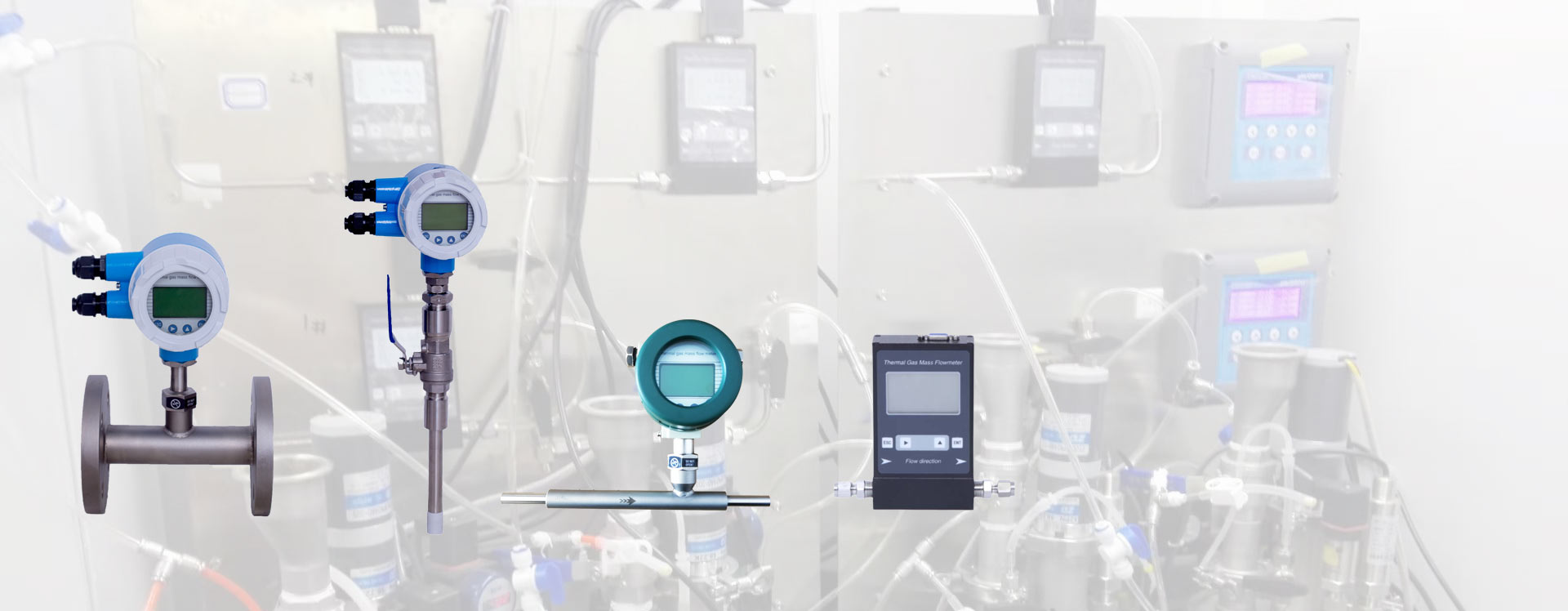
3.1 What is the compressed air application in the textile industry?
Textile companies produce products that come into direct contact with people and require high-quality aerodynamics. Oil-free air compressors are widely used in food, medicine, rail transport, electromechanics, and textiles. In textile companies, air-jet looms for weaving fabric require dry, oil-free compressed air. In the production and operation of air, jet looms, fine nozzles blow compressed air onto the yarn strands, creating vortexes that give the yarn its shape and properties.
The air jet loom is the most extensive air-using equipment in the textile industry. Air-covered silk machines and bombing machines also require compressed air; compressed air is also needed to dry and transport slices in the chemical fiber industry.
The main body of the production of air-jet looms uses compressed air as a weft-inducing carrier, which has strict requirements on the quality and pressure of compressed air. The principle of operation is to use air as a weft-triggering medium, with a jet of compressed air to produce frictional traction on the weft yarn for traction, bringing the weft yarn through the bobbin opening and achieving the purpose of weft trimming through the jet generated by the air.
For the proper operation of air-jet weaving machines, the compressed air quality as a means of weft guidance is essential and directly impacts the quality of the product.
Compressed air quality standards and solutions for the textile industry
If water, oil, dust, and other impurities appear in the compressed air during the production process, it will cause very obvious contamination of the material, which compressed air. However, each link to the tight air quality requirements is different, but as long as the air source meets the air jet loom, it basically can meet all the air needs of the entire production line. Textile products require clean, oil-free air, and thus oil-free screw compressors are more common in textile mills.
This is a severe problem. The quality of compressed air is guaranteed not only for the stable operation of the lead weft but also to improve the hygiene of the production.
Many aspects of textile production need to use post-treatment equipment. It is necessary to configure precision filters and adsorption dryers to purify the treatment of water and dust, and other solid impurities. To achieve a pressure dew point of -20°C and solid particles of less than one μm to ensure stable production and reduce the harm to equipment products to a minimum standard.
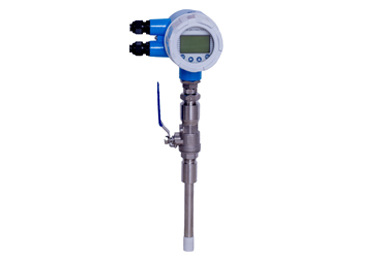
3.2 Why thermal mass flowmeters are widely used in the textile industry?
As the textile industry has developed in the direction of high-grade clothing fabrics, various new air-jet looms have been introduced for use in large numbers, and the demand for compressors has increased. And the measurement of compressed air is becoming increasingly important and indispensable. The thermal gas flowmeter is one of the better options for measuring compressed air.
Thermal gas mass flow meters are instruments that measure the flow of gases using the thermal diffusion principle. The sensor is made up of two reference level RTDs (thermal resistance devices). One is a velocity sensor RH, and the other is a temperature sensor RMG which measures the change in gas temperature. When the two RTDs are placed in the gas being measured, one sensor RH is heated, and the other sensor RMG is used to sense the temperature of the gas being measured. As the gas flow rate increases, the gas stream picks up more heat, and the temperature of sensor RH decreases.
Thermal flow meters are flow meters based on the principle of thermal dispersion. This means that when a fluid flows through a heated object, the amount of heat dissipated by the thing is proportional to the flow rate of the fluid. The type of flowmeter sensors has two standard grade RTD. One is used as a heat source, and another is used to measure the fluid temperature. When the fluid flow, the temperature difference between the two into a linear relationship with the size of the flow, and then through the microelectronic control technology, this relationship will be converted into a linear output of the measured flow signal.
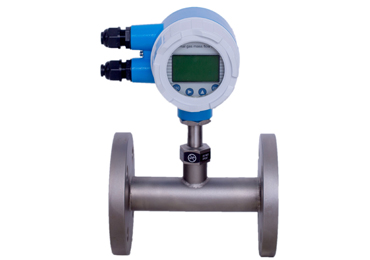
The thermal gas mass flow meter has the following advantages.
- It is an accurate mass flow meter. The gas flow measurement without temperature and pressure compensation, size is convenient and precise. The mass flow rate of the gas or the standard volume flow rate can be obtained.
- A wide range ratio can measure the flow rate up to 100Nm/s down to 0.5Nm/s gas, can be used for gas leak detection.
- It has good vibration resistance and long service life. The sensor has no moving parts or pressure sensing components and is not affected by vibration on the measurement accuracy.
- Easy installation and maintenance. Non-stop installation and maintenance can be achieved where site conditions permit.
- Digital design. Overall digital circuit measurement, accurate measurement, and easy maintenance.
- Using RS-485 communication or HART communication, factory automation and integration can be achieved.
